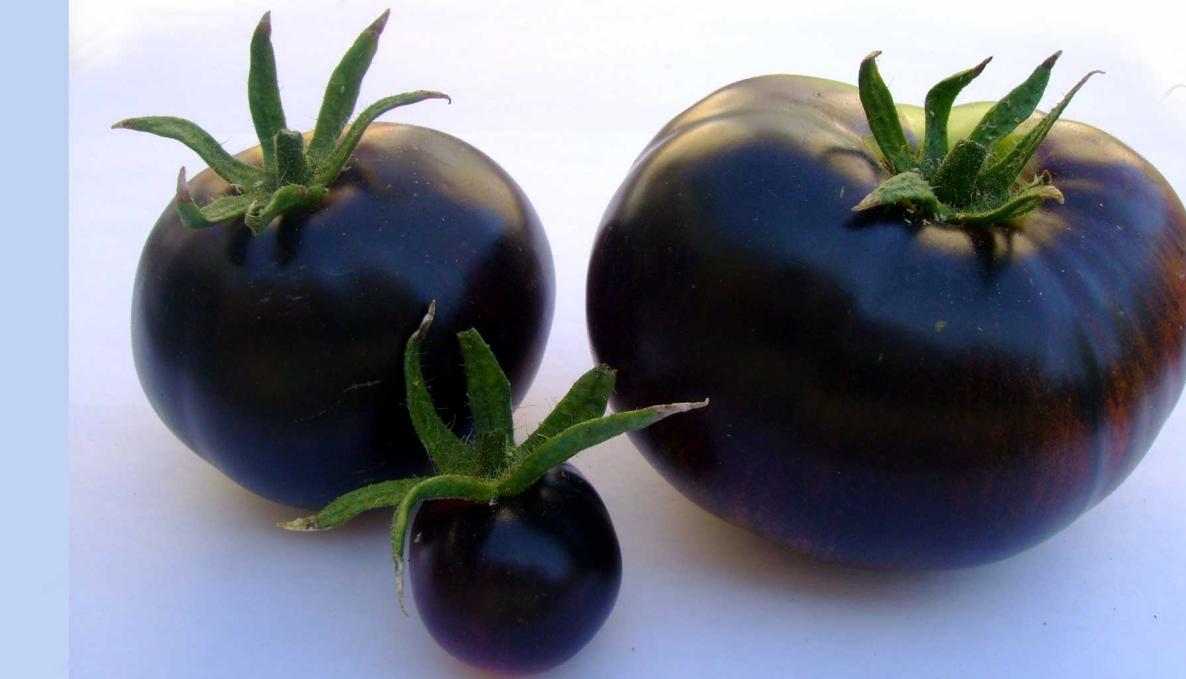PLANT PHYSIOLOGY: Current research revealed that red tomatoes were originally purple. Two papers published by researchers from Sant’Anna School and the Chinese Academy of Sciences studied the mechanisms of anthocyanin biosynthesis

It seems that red tomatoes are a matter of pure chance. Current research conducted at the Sant’Anna School PlantLab and the Chinese Academy of Sciences in Beijing has produced two papers published in journals Plant Communications (research paper by Italian scholars) and Molecular Plant (research paper by Chinese scholars) that contribute to clarify why domesticated tomato fruits display a homogeneous red coloration.
Typically, the tomato does not contain anthocyanin. Its red color is determined by the carotenoid levels; however, the fruit of closely related species such as Lycopersicon chilense, Lycopersicon hirsutum, Lycopersicon cheesmanii, and Solanum lycopersicoides contain anthocyanins. Anthocyanin fruit (Aft) from L. chilense, S. lycopersicoides, and atroviolacium (atv) from L. cheesmanii cause anthocyanin expression in tomato fruit. The ancient tomato with its purple skin became uniformly red through the effect of DNA mutations. The studies conducted at Sant’Anna School PlantLab and the Chinese Academy of Sciences demonstrate that the Aft (Anthocyanin fruit) tomato accession inherited from wild tomatoes the ability to accumulate anthocyanin in fruit peel through the introgression of loci controlling anthocyanin pigmentation.
Plant geneticists and scientists found that tomato’s genome possessing more than 30,000 genes is a key to understanding the accumulation of anthocyanin in plants. As genes have been suggested to participate in the anthocyanin pathway, the Aft locus was fine‐mapped to an approximately 145 kb interval on chromosome 10 involved in anthocyanin regulation in tomato. The atv locus enhances anthocyanin pigmentation in the entire plant, particularly in the vegetative tissues. The amount of anthocyanins in tomato fruit increases when the atv locus is combined with the Aft locus. Scientists carried out a comparative functional analysis of the transcription factors in wild type and Aft plants, testing their ability to take part in the transcriptional complexes that regulate the biosynthetic pathway and their efficiency in inducing anthocyanin pigmentation.
Researchers Sara Colanero, Silvia Gonzali and Pierdomenico Perata from the Sant’Anna School PlantLab found that significant differences emerged in the expression level and protein functionality, while splicing mutations determined a complete loss-of-function of the wild type protein. Results show that cultivated tomatoes contain a non-functional allele and therefore fail to produce anthocyanin biosynthesis. However, as pointed out by the research team of the Chinese Academy of Sciences in Beijing, the purple tomato variety Indigo Rose (resulting from conventional breeding), which combines the dominant Aft locus and the recessive atv locus from wild tomato species, exhibits light-dependent anthocyanin accumulation in the skin.
Whereas Aft encodes a functional allele of an anthocyanin activator, atv encodes a non-functional allele of the anthocyanin repressor. The expression of anthocyanin activator can activate both anthocyanin biosynthetic genes and their regulatory genes, suggesting that activator serves as a master regulator and plays a critical role for the activation of anthocyanin biosynthesis. Both of the studies therefore demonstrate that efficient engineering of complex metabolic pathways could be achieved through tissue-specific expression of master transcriptional regulators.
“Through the transcriptional regulation of genes involved in the metabolic pathways we can improve the nutritional qualities of fruits and vegetables and we are proud with the results of our research” – said Pierdomenico Perata, Professor of Plant Physiology at Sant’Anna School. “However, over the past decade, cutting-edge research on plants functional genomics has been carried out in China to meet national strategic needs in food security. China has increased its investment in agricultural and crop functional genomics for more than 3% of the GDP while Italian average is about 1.3%: daunting challenges can drive us out of the competition”.
Anthocyanin-rich tomatoes might provide health benefits. Anthocyanins are antioxidants with strong nutraceutical potential, neuro-protective effects, cardio-vascular benefits and anti-inflammatory effects.
References
- Alternative Splicing in the Anthocyanin fruit Gene Encoding an R2R3 MYB Transcription Factor Affects Anthocyanin Biosynthesis in Tomato Fruits
https://www.cell.com/plant-communications/fulltext/S2590-3462(19)30006-9
- A Transcriptional Network Promotes Anthocyanin Biosynthesis in Tomato Flesh
https://www.cell.com/molecular-plant/fulltext/S1674-2052(19)30336-3



